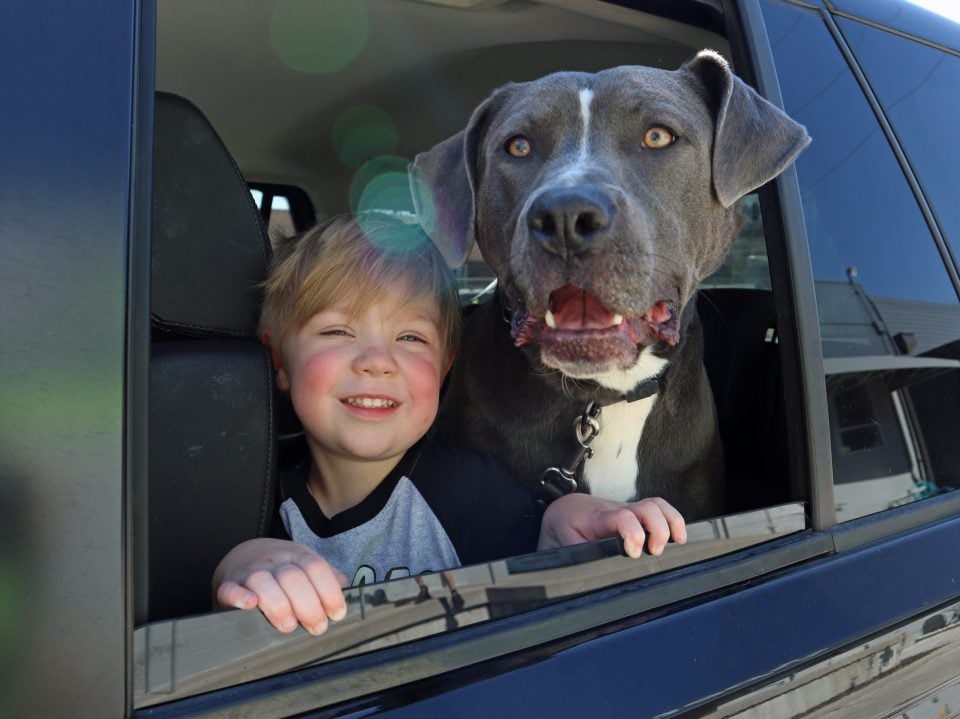“So, how many kids do you have?” they ask me.
“Three,” I say. “Beesley is 4 years old. Maeby is 2. And Marley’s 11 months.”
The stranger starts to gush, patiently waiting for me to pull up a photo while secretly questioning my interesting choice of names. But the instant I turn my phone around to show them my lock screen, I always manage to get a good chuckle out of them. And I’m more proud of my joke than I should’ve been.
It’s a picture of my two dogs and cat who I refer to – I’m sure along with many others – as my children.
But here in two short months, however, there will be an actual human child in the photo with them. My joke will probably be a tad less effective, but that’s beside the point. I know it’s going to take a lot of work in order to get that perfect photo.
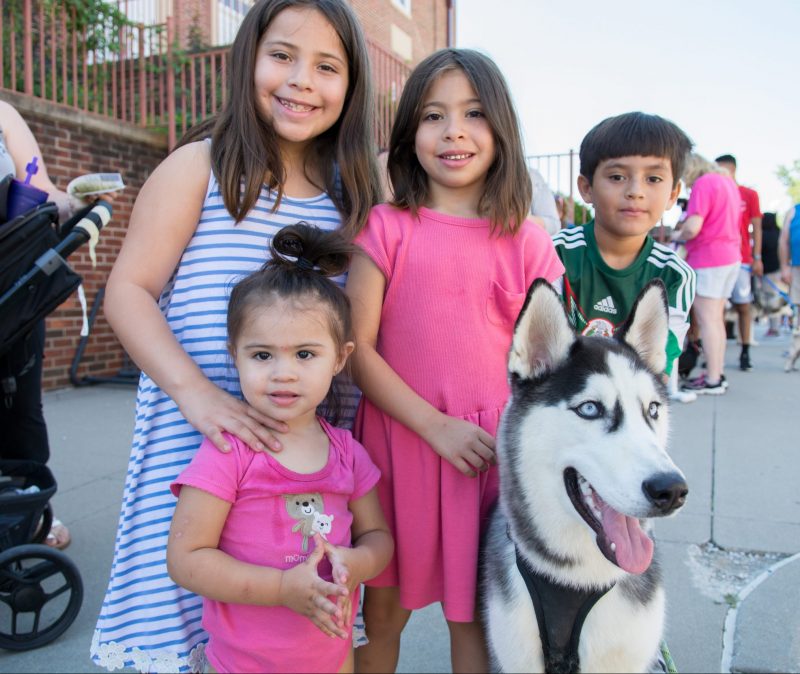
And the truth is I’m a little anxious to introduce my pets to their new baby brother in May. Not because I fear they won’t shower him with the love, loyalty and affection they’ve shown me, but because I know this new experience is going to test my patience and require a whole lot of time and repetition. Are they going to jump on us with excitement as we walk through the door? Will my cat think his little toes and fingers are toys? How is my shy and fearful one going to react to all the new noises or sudden movements?
It’s not uncommon to hear about pets getting surrendered to shelters or rehomed by their owners after welcoming a new baby. I still have a couple months left before mine gets here, and I’m already anticipating how overwhelming those first several weeks are going to be. It’s a dramatic change that will interrupt the daily life and routine of everyone in the household, people and pets included.
But pets are family, too. And here at Pet Resource Center of Kansas City, we do everything we can to keep it that way, which is why I want us to learn how to properly prepare our furry kids for the arrival of their new brother or sister together so that relinquishing them is off the table. I’ve gathered some research that I think would be helpful to share with all of you dog and cat moms and dads who will soon be promoted to human parents. And I hope to show you all how my experience went and provide you with more tips here in a few months.

Before the baby arrives
Refine your pet’s obedience skills
Newborns are fragile. But luckily you have nine months to work with your pet on refining their skills and/or teaching them new ones before the baby arrives. “Sit,” “stay,” “lay down,” “drop it,” “off” and “gentle” will be essential in helping you control the sweet chaos in the months to come. PRCKC does offer dog and puppy training classes, so hit us up if you would like to enroll: 816-353-0940.
Practice with a baby doll
Once they’ve mastered the tricks above, practice with a baby doll. Walk through the doors with the doll in your arms, let them smell its fingers and toes, maybe even give them a gentle kiss and lay it on the floor as if it were tummy time or crawling. This will help set boundaries and teach them to only interact with him or her when you invite them to.
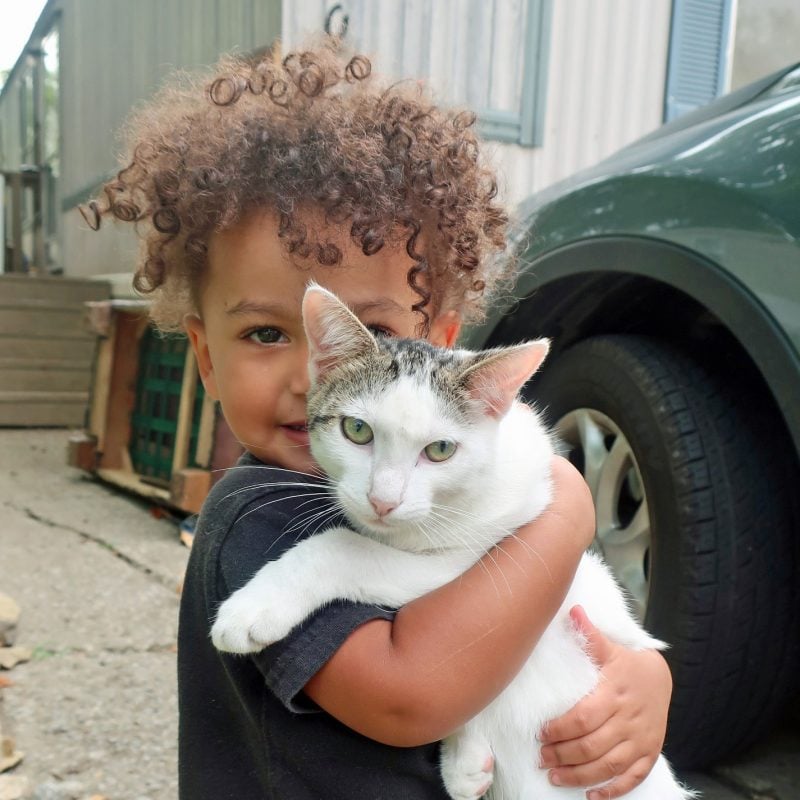
Implement new rules
Before your new roommate arrives, implement any new house rules so that your pet has time to learn and follow them. This could mean the nursery and/or other furniture is now off limits or that they can’t bark at anything and everything they see out of the window. You know your pet best, so do whatever makes you comfortable and is best for you, your pet and your baby.
Get them used to new sounds and movements
There are lots of new noises and movements that your pet will be exposed to once the baby arrives. To help them adjust, play sounds of a baby crying often. It will also take some time for your child to understand how to properly interact with your pet, so getting them used to gestures like poking, patting or grabbing isn’t a bad idea either. Make sure to reward them for their positive behavior.
Make changes to your daily routine
Your pet is probably used to eating meals, going on walks and taking potty breaks at certain hours of the day, but odds are this routine is going to change … a lot. Try to anticipate what your new routine will look like and get them started on it early. Don’t forget to reserve a spot for cuddles and play dates with them, as well, as they are going to miss being the center of your world.
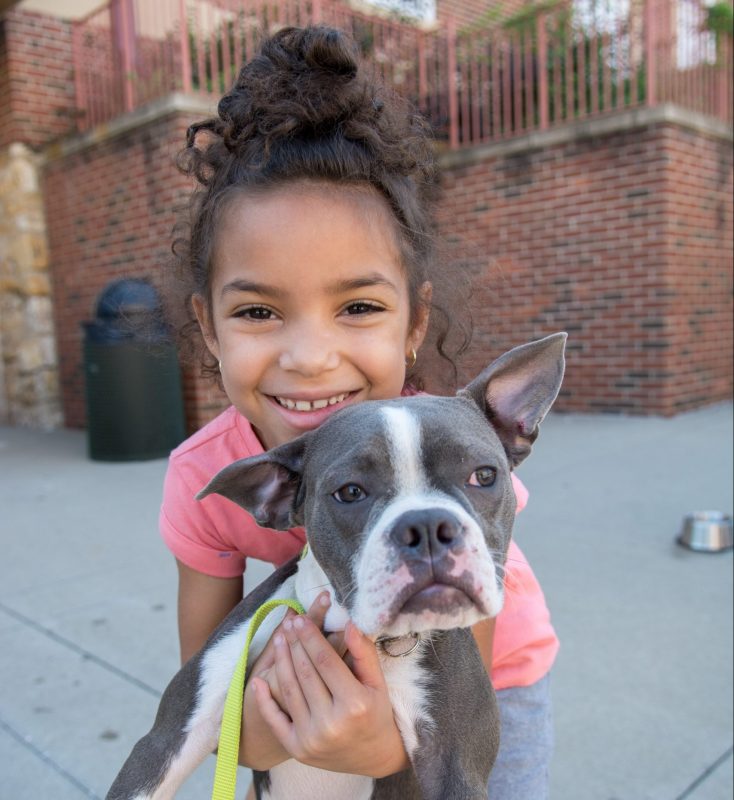
Bringing the baby home
Have a helper
Dad. Grandma. Grandpa. Whoever it is, you’re going to want someone there with you as you introduce this new little human to its four-legged siblings, especially if you have big dogs or multiple pets like me. Putting them on a leash and introducing them one at a time should make a big difference, too.
Drain their energy before meeting the baby
If you have young or rowdy pets like me, have dad or your helper take them out back for a quick game of catch or frisbee. It’s important to make sure they come down from Cloud 9 before coming inside, and they’ll probably want to say hi to you too, mom, after being gone for so long. The purpose of this is to release some of that energy so that the environment is calm, quiet and relaxing when they meet the baby.
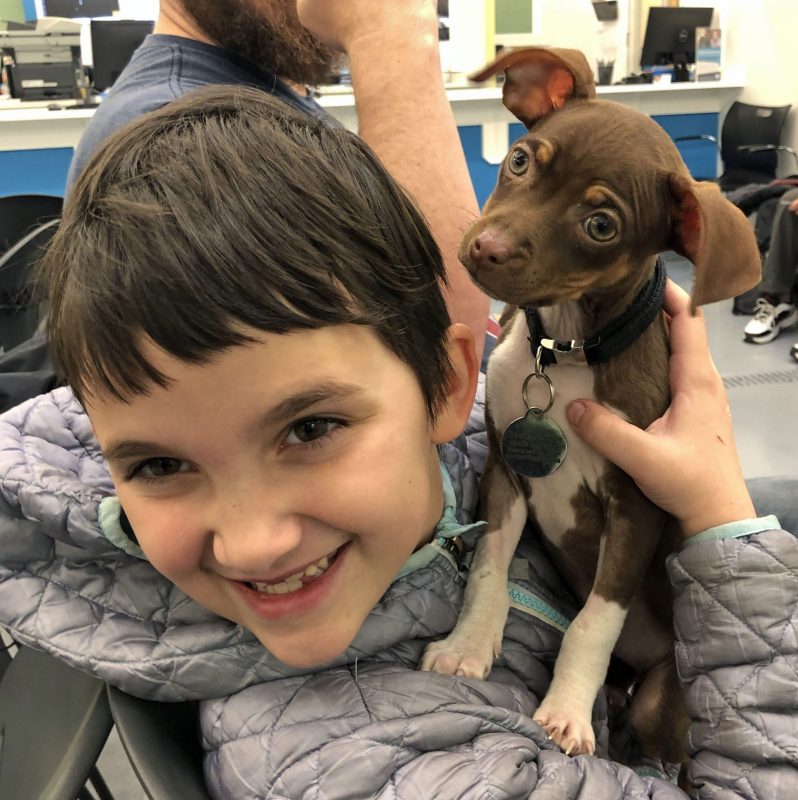
Introduce them to the baby’s scent
Before bringing the baby inside, let your pets sniff a blanket or an article of their clothing so they can familiarize themselves with the new scent while also releasing some of that excitement.
Be conscious of your energy
If pets are one thing, it’s smart. They sense their owners’ energy, mood and emotions immediately and feed off of them. Remember to stay calm, keeping your voice soft, low and movements slow, so they will do the same and this important introduction goes as smoothly as possible.
It’s okay to be anxious. This is new territory, and we’re all learning. But by following these tips, I have no doubt our kids’ first word will be ‘woof’ instead of ‘mama’ or that they’ll be sneaking their first piece of dog or cat food before we know it.
Please remember that if things are quite working out the way you had planned, it’s okay to ask for help. You can start by calling us at 816-353-0940.
